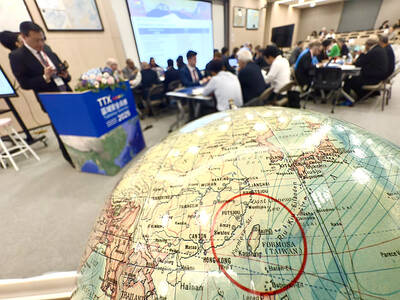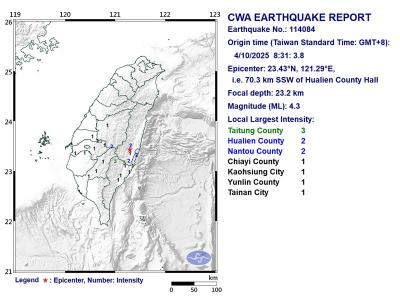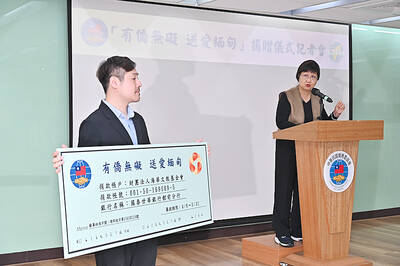Current policies to encourage fertility are inconsistent, ineffective and work at cross-purposes, a researcher said yesterday, adding that parental leave and child-rearing subsidies should be distributed equally among the public to effectively encourage fertility.
National Taiwan University associate professor Chen Yu-hua (陳玉華) presented her research results on Taiwanese attitudes toward fertility, behavioral changes and possible policy impacts at the National Science Council.
The nation’s fertility rate has dropped drastically in the past few decades, reaching a low of below 1 in 2010 before rising marginally to 1.07 last year, making Taiwan the owner of one of the lowest rates in the world, Chen said, adding that the situation has become even more pressing as the population ages.
Looking at Sweden’s success in increasing its fertility rate last year through a mix of social welfare and labor policies, shows that policies can affect individuals’ and families’ willingness to have children, Chen said.
However, it is difficult to establish such a social welfare system in Taiwan. In addition, the government must also be able to provide a large number of secure jobs for women, she added.
Chen said Germany has been able to increase its fertility rate without changing its social system, through the provision of childcare, maternity leave protection, parental leave and family allowances, which could serve as a model for Taiwan.
She said if economic concerns are the main reason why Taiwanese are hesitant to have children, then the government should adjust its current policies — which vary according to counties and cities, and between people on different vocational insurance programs — to make them more equal.
Having a different fertility encouragement policy in each area is inconsistent, Chen said, adding that while a parent on government employee, school staff, or military insurance can receive a childbirth subsidy worth two months of their salary, people on labor insurance receive a subsidy equal to just one month of their salary, and this is applicable only to mothers.
In addition, Ministry of the Interior data showed that although protected by the law, many women do not take parental leave or apply for subsidies, and that the majority of people who do make use of the subsidy were government employees or school staff, she said.
The government should review whether fertility policies should still be linked to different vocational insurance programs or whether it would be more effective to provide equal and substantial policies to support families, she said.

Taiwan is stepping up plans to create self-sufficient supply chains for combat drones and increase foreign orders from the US to counter China’s numerical superiority, a defense official said on Saturday. Commenting on condition of anonymity, the official said the nation’s armed forces are in agreement with US Admiral Samuel Paparo’s assessment that Taiwan’s military must be prepared to turn the nation’s waters into a “hellscape” for the Chinese People’s Liberation Army (PLA). Paparo, the commander of the US Indo-Pacific Command, reiterated the concept during a Congressional hearing in Washington on Wednesday. He first coined the term in a security conference last

DEFENSE: The National Security Bureau promised to expand communication and intelligence cooperation with global partners and enhance its strategic analytical skills China has not only increased military exercises and “gray zone” tactics against Taiwan this year, but also continues to recruit military personnel for espionage, the National Security Bureau (NSB) said yesterday in a report to the Legislative Yuan. The bureau submitted the report ahead of NSB Director-General Tsai Ming-yen’s (蔡明彥) appearance before the Foreign and National Defense Committee today. Last year, the Chinese People’s Liberation Army (PLA) conducted “Joint Sword-2024A and B” military exercises targeting Taiwan and carried out 40 combat readiness patrols, the bureau said. In addition, Chinese military aircraft entered Taiwan’s airspace 3,070 times last year, up about

A magnitude 4.3 earthquake struck eastern Taiwan's Hualien County at 8:31am today, according to the Central Weather Administration (CWA). The epicenter of the temblor was located in Hualien County, about 70.3 kilometers south southwest of Hualien County Hall, at a depth of 23.2km, according to the administration. There were no immediate reports of damage resulting from the quake. The earthquake's intensity, which gauges the actual effect of a temblor, was highest in Taitung County, where it measured 3 on Taiwan's 7-tier intensity scale. The quake also measured an intensity of 2 in Hualien and Nantou counties, the CWA said.

The Overseas Community Affairs Council (OCAC) yesterday announced a fundraising campaign to support survivors of the magnitude 7.7 earthquake that struck Myanmar on March 28, with two prayer events scheduled in Taipei and Taichung later this week. “While initial rescue operations have concluded [in Myanmar], many survivors are now facing increasingly difficult living conditions,” OCAC Minister Hsu Chia-ching (徐佳青) told a news conference in Taipei. The fundraising campaign, which runs through May 31, is focused on supporting the reconstruction of damaged overseas compatriot schools, assisting students from Myanmar in Taiwan, and providing essential items, such as drinking water, food and medical supplies,